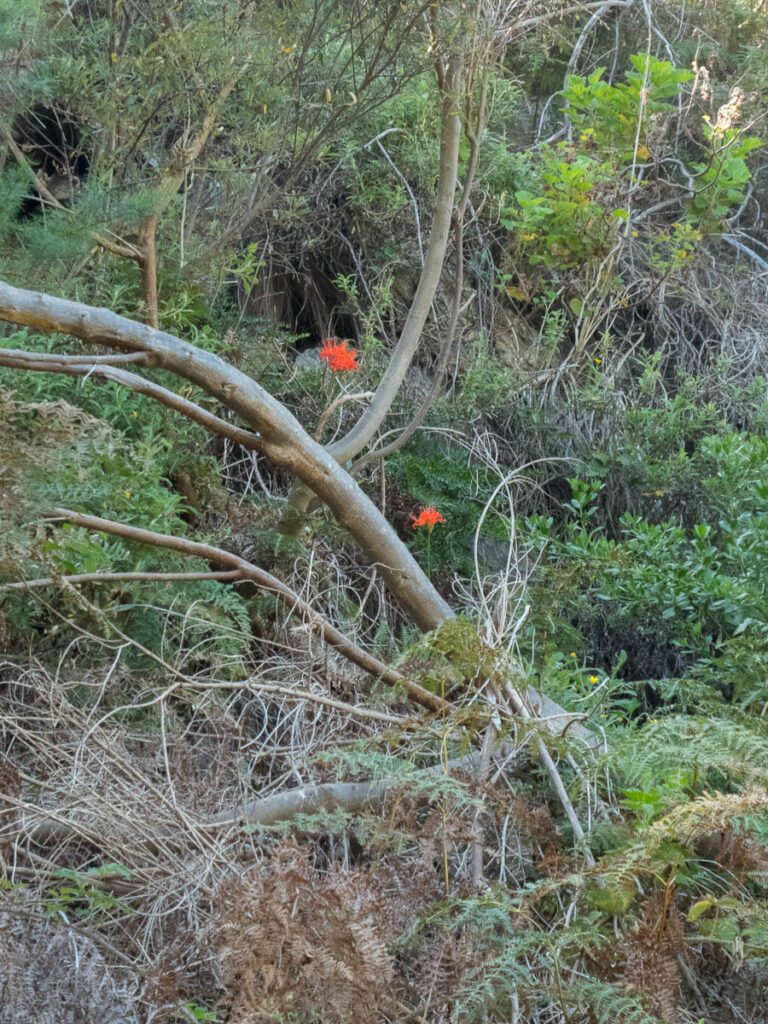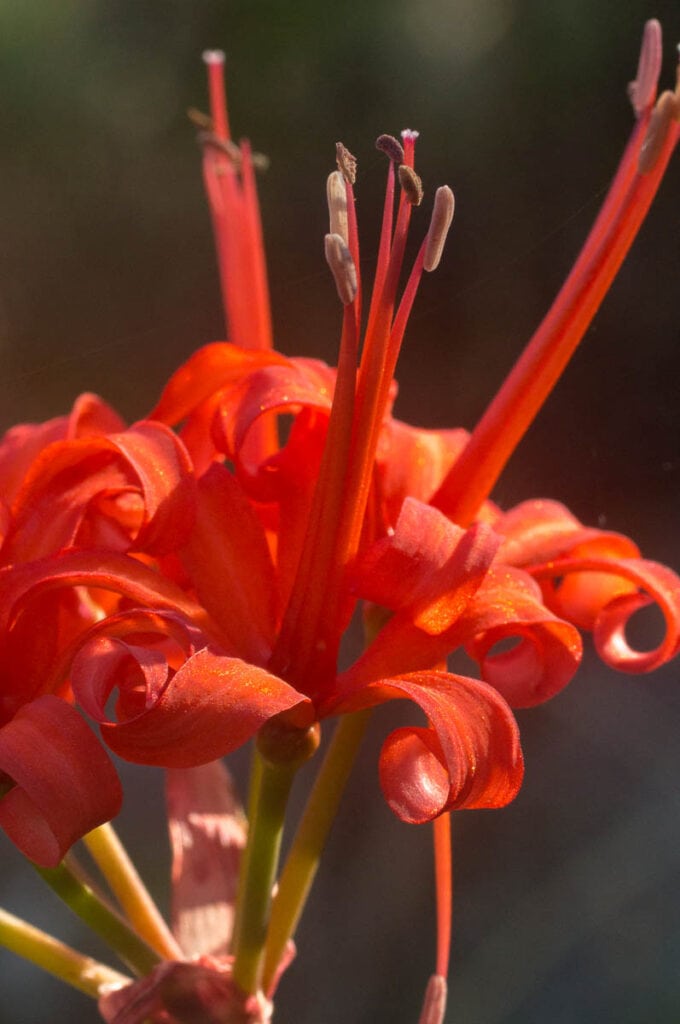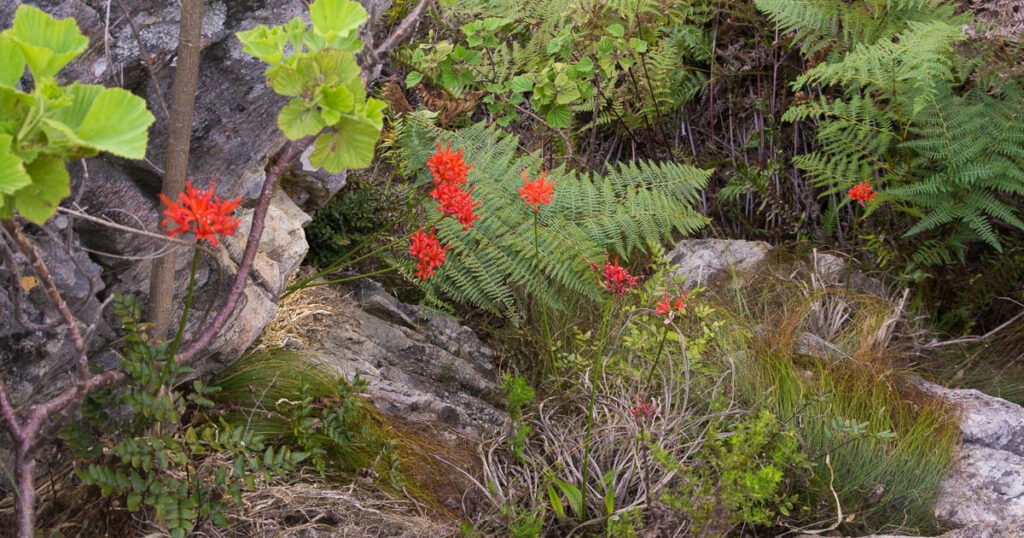One of our most beautiful plants at Phillipskop and indeed in the Cape flora itself is Nerine sarniensis. But both the scientific name and the common name, Guernsey Lily (Sarnia is the Latin for the English Channel island of Guernsey), are decidely inappropriate for a species confined to the Western Cape of South Africa. The origin of the name, first coined in 1725 by James Douglas, has become inextricably entwined with an urban legend about how the species established itself on the island following a shipwreck on the shores. The story of the shipwreck was first recorded in 1680 by a professor of botany at Oxford called Robert Morison. Ironically, the boat was said to have been travelling from Japan and consequently that island was considered its native origin – another early name used for the species was “Narcissus japonicus”!
The truth of the matter appears to be far less romantic. No major shipwrecks were recorded on Guernsey around the time of its purported origin there and it seems more likely that plants were given to the governor on the island by a passing sailor or visiting dignitary. The plants then proved to like the climate and flourished, so much so that they were soon being exported in significant numbers to England and beyond. By the time of James Douglas’s book the island and the plant had become so closely associated that the names became irreversibly linked.
The species is actually found from the Cederberg in the north down to the Cape Peninsula and east towards Riviersonderend. In our area it loves the banks of kloofs alongside streams, often in quite thick tall vegetation. It therefore flowers best soon after a fire when the competing plants have been removed. However, it does flower sporadically even in mature fynbos and the splashes of bright red are easily spotted during March and April. At Phillipskop, it occurs on the steep rocky slopes above Nerine Pool but you have to visit there at the right time of the year to see them and some years the flowers are more prolific than others. Even in good years, there are definitely more plants than flowers, an observation that is only noticed once the strap-shaped leaves appear in winter.
For those wanting to read more on the fascinating history of Guernsey and the origin of Nerine sarniensis then one would need to purchase Helen Brock’s commentary on James Douglas’s book. But as that is out of the price range of most people, a good summary is given by John David on the Nerine and Amaryllid website: http://nerineandamaryllidsociety.co.uk/book-review-1. John David also highlights another mistaken belief that the generic name is derived from a Greek name for a sea-nymph, whereas Nerine is not a Greek word at all but taken from Camoen’s poem Os Lusiades, wherein the sea-nymph Nerine rescues Vasco da Gama’s ship (https://archive.org/details/oslusiadasdeluis00cam/page/n49/mode/2up). At least alluding to Vasco da Gama is a more appropriate association for a Cape bulb than Guernsey ever was.










